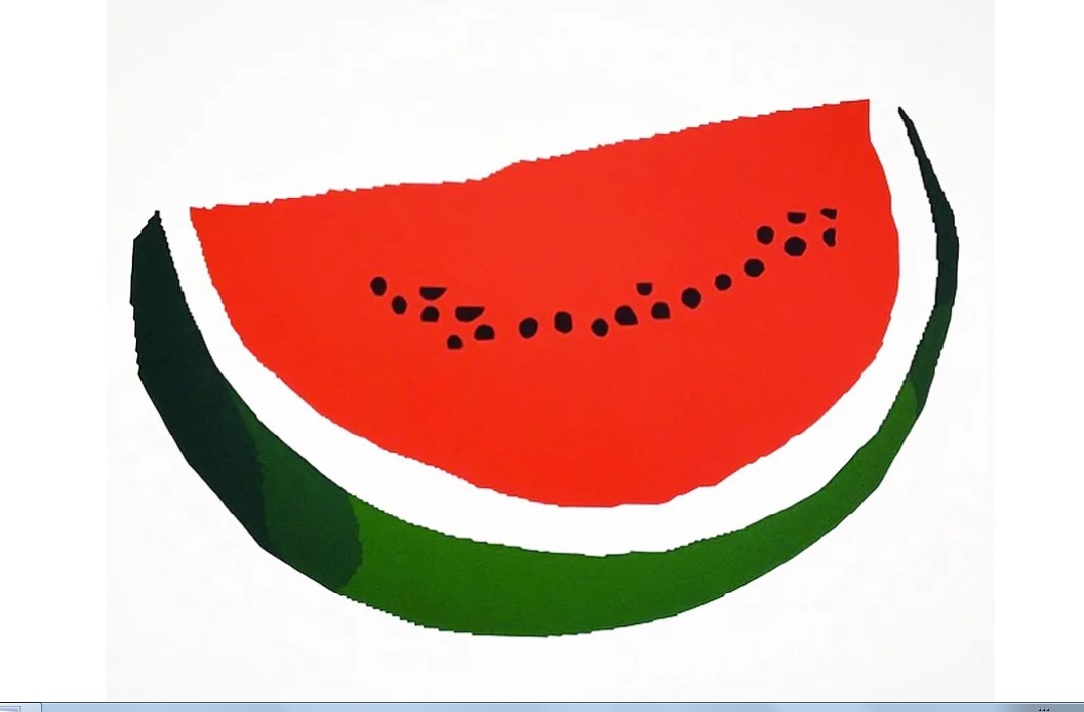
However, its cultural importance is not limited to the role it plays in Palestinian meals. Due to its white, green, red and black colors, it became a symbol to represent the flag of Palestine, after Israel banned its public display in Gaza and the West Bank.
In the 1980s, the occupation forces confiscated works of art from Gallery 79 in the city of Ramallah, a center of cultural activities that was closed by the authorities of the State of Israel. At that time, three well-known Palestinian artists were detained. Israeli soldiers warned Silman Mansour, Nabil Anani and Isam Badr to remove political allusions from their artwork. Monsour himself commented that the head of the Israeli repressive forces told them: “Why do you make political art? Why don’t you paint beautiful flowers or nudes?”, before ordering them to show their paintings before exhibiting them to determine if they were acceptable. or if they would be censored. The order was that they could not even use the colors red, green, white and black because they were the colors of the Palestinian flag. Isam Badr then said, “Well, if I paint a flower with those colors, what will you do?” And the officer responded, “It would be confiscated. Even if you make a watermelon, it will be confiscated.”
It was then that the watermelon became a symbol of the first intifada, the resistance known as the “Stone War,” which began in 1987 and ended with 3,162 Palestinians and 127 Israelis killed in 1993.
After the Oslo agreements of that year, the ban on displaying the Palestinian flag was revoked, although this again became a cause of conflict with each advance of the Zionist settlers and resistance to the occupation, such as during the second intifada, which It began in September 2000 and ended in February 2005, with more than 5,000 Palestinians and around 1,000 Israelis dead and the definitive isolation of the Gaza Strip.
Khaled Hourani, who along with the visual artists Mansour and Anani, is co-founder of the International Academy of Art in Palestine, in 2007 painted a slice of watermelon for his Subjective Atlas of Palestinewhich he called “Watermelon Flag”, creating a design that multiplied by thousands on posters, flags, clothing, graffiti, social networks, etc.

In 2021, activists around the world reported that social media platforms were restricting content related to Palestine and had even removed accounts. On Instagram, for example, a Palestinian digital rights nonprofit organization reported that the platform was hiding comments containing the Palestinian flag emoji or automatically inserting the word “terrorist” into translations of some profiles containing that emoji. . Then the use of the watermelon emoji spread to avoid censorship by algorithms.

At the Rotterdam Arts Institute that same year, students hung a banner reading “Stop Ethnic Cleansing, Free Palestine,” which they hung during the May attacks on Gaza. But the dean ordered the poster to be removed and the persecution against pro-Palestinian activists increased. Then, artists Christian Ovesen and Emma Astner painted Hourani’s watermelon and accompanied it with the text: “Ceci n’est pas une watermelon” (“this is not a watermelon”), paraphrasing the “Ceci n’est pas une pipe” from the well-known painting by the Belgian surrealist painter René Magritte.

In Israel, the Zazim movement, of Arabs and Jews against the occupation and for other causes of human rights, social and environmental justice, launched a campaign in June of this year, plotting taxis in Tel Aviv with images of Hourani’s watermelon, against the ban that the Israeli government issued in those same days on using Palestinian flags in meetings of more than three people. Next to the watermelon image, you can read “This is not a Palestinian flag.”
“Starting this morning, a signage campaign by the Zazim movement has been deployed on service taxis in Tel Aviv and the surrounding area in protest against the draconian bill to ban waving 🇵🇸 and against the police violence against female citizens and demonstrators who waved it in recent weeks.” • @TimeOutTA About our taxi sign campaign 🍉 https://t.co/xVBiXLsHHW
— Zazim – an active community Zazim | Zazim (@zazim_org_il) June 22, 2023
Paradoxically, the idea of the watermelon was unintentionally suggested by a head of the Israeli occupation army in his desire to censor the work of Palestinian artists. Against censorship, the popular imagination gave the watermelon a prominent place in the resistance in the occupied territories, but also in every corner of the world where a heart beats for Free Palestine.
Source: www.laizquierdadiario.com

